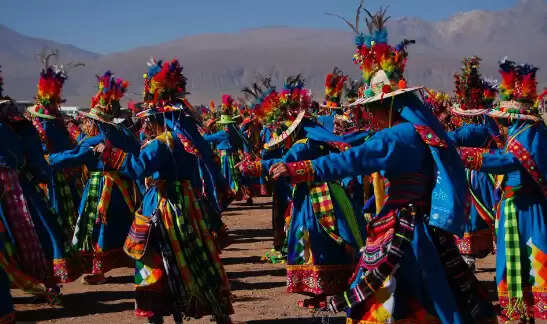Most Popular Folk Dances Of Meghalaya
Meghalaya, nestled in the northeastern part of India, is a land of breathtaking landscapes and vibrant cultures. The state is renowned for its unique folk dances, which reflect the traditions, history, and daily lives of its indigenous communities. These captivating performances showcase the rich heritage of Meghalaya and are an integral part of the region's cultural identity. In this article, we will delve into the most popular folk dances of Meghalaya that continue to mesmerize both locals and tourists alike.

- Wangala Dance:
The Wangala Dance, also known as the Hundred Drum Dance, is one of the most famous traditional dances of the Garo community in Meghalaya. This vibrant dance is performed during the Wangala Festival, which is a significant agricultural festival celebrated to express gratitude to the Sun God for a bountiful harvest. Accompanied by the mesmerizing beats of drums and traditional instruments, the dancers adorned in colorful and intricate costumes perform rhythmic movements that symbolize unity, joy, and prosperity.
- Nongkrem Dance:
The Nongkrem Dance is an essential part of the Khasi cultural celebrations and is performed during the Nongkrem Festival, held annually at the Smit village near Shillong, the capital of Meghalaya. The dance is performed by young, unmarried Khasi women who wear unique traditional attire, including silver crowns adorned with orchids and feathers. The graceful movements and swaying gestures depict the religious and cultural significance of the festival, which is held to appease the local deity and seek blessings for a prosperous life.
- Shad Suk Mynsiem:
The Shad Suk Mynsiem, also known as the Dance of Joy, is celebrated with immense enthusiasm during the harvest season by the Khasi community. This dance involves both men and women dressed in colorful traditional attire, dancing together in a circle. The vibrant and energetic performance is accompanied by rhythmic music created using traditional drums, flutes, and cymbals. The dance not only celebrates the bountiful harvest but also showcases the strong bond between the people and their land.
- Doregata Dance:
The Doregata Dance is an engaging folk dance performed by the Garo community. The dance portrays the hunting traditions and practices of the Garo tribes. Dancers mimic hunting movements, such as aiming arrows, setting traps, and tracking animals, while maintaining harmony with the music and their fellow performers. The rhythmic dance is a fascinating glimpse into the ancient hunting culture of the Garo people.
- Laho Dance:
The Laho Dance is a unique traditional dance performed by the Tiwa (also known as Lalung) tribe in Meghalaya. It is typically showcased during various social and religious occasions. The dance involves both men and women forming rows and moving in a circular pattern while singing melodious folk songs. The Laho Dance is an integral part of the Tiwa community's identity and plays a crucial role in preserving their cultural heritage.
Conclusion
Meghalaya's folk dances are not only captivating performances but also a medium for preserving the state's rich cultural heritage. These dances bring communities together, celebrating their history, customs, and the beauty of their land. As tourists and enthusiasts witness the rhythmic movements and vibrant costumes, they are drawn into the soulful essence of Meghalaya's folk dances, experiencing the state's unique charm. These dances serve as a reminder of the importance of cultural preservation and the significance of passing down traditions from one generation to another, keeping Meghalaya's cultural tapestry alive and thriving.








